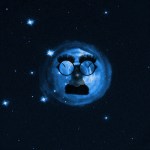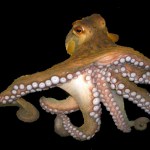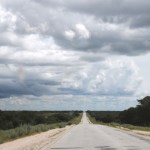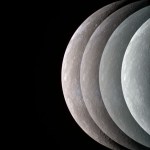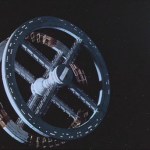space
What are stars?
Despite their ubiquity in our universe, their praises often go unsung. A friend admitted to me once that he hadn't realized -- you know, really viscerally realized -- that our sun was itself a star until he was in his twenties. From that moment forward, however, every glance at the night sky bowled him over with such an emotion of vast familiarity that he could hardly stand to look at it. And with just cause: every star, like our sun, is a wonder, a factory producing almost all the heavy elements floating around the cosmos -- including the everyday matter that makes up the…
Say you're visiting Los Angeles and you have a sudden craving for Chinese food. Since you are only visiting, you might not be aware that nothing is open past, like, 10pm (not even coffee houses), but you get in your rental car and go driving around in search of your Chinese feast anyway. You try hitting up Panda Express, but no such luck. Of course they're closed. You try the neighborhood Chinese restaurant: closed as well. You get back in the car, and think to yourself "maybe the OTHER Panda Express will be open", but alas, it is not. You are ready to return to the hotel and just go to sleep…
It's amazing how much you can learn about an animal's mind by a simply watching it.
Video 1: Gratuitous video of octopuses never hurt anyone. Maybe this will sate the Pharyngulites.
In the late 1980s, a researcher named Jennifer A. Mather wondered about octopuses' use of spatial memory. This researcher and some volunteers did some skin-diving near Bermuda and observed octopuses going out in search of food. They noticed that sometimes after catching a tasty bit of chow, the octopuses ate out, but sometimes they'd take their snack to go and eat at home. And not only that, but it turned out…
A large part of my affection for science comes from the thrill of terror I get when a particularly insane piece of science news hits the presses. When an article begins with a sentence like, "there is something strange in the cosmic neighborhood," or "all the black holes found so far in our universe may be doorways into alternate realities," my pulse quickens and a dormant paranoia is roused from deep within my breast: a sensation of joyful panic. I used to call this the "fourth-grade nightmare fantasy." This might be because as a long-time science fiction adept, I tend to read science news…
Last year Neatorama's Alex Zavatone happened to find himself near Angola on the African continent. While driving through Grootfontein, Namibia, he spotted a road sign that simply said "Meteorite." Later he decided to make a 170 mile pilgrimage through beautiful and wild landscapes to Hoba to see what it was all about.
You'll have to go to the Neatorama website to see the money shot - but it's worth it! I've never seen such a well-presented interplanetary visitor. Read Alex's full tale here.
My Very Excellent Mother Just Served us Nine Pizzas.
My Very Easy Method Just Speeds Up Naming Planets.
My Very Early Morning Jam Sandwiches Usually Nauseate People.
Mon Vieux Tu M'as Jeté Sur Une Nouvelle Planète!
-- Various mnemonic devices for remembering the order of the nine planets
I just found out that Mercury is shrinking.
The planet, already our most diminutive neighbor, has lost around 3 miles of its 3,000 mile diameter in its life, or one tenth of one percent.This may not sound like much, but in geological terms, three miles is immensely significant.
This boggling fact was…
tags: Alex Filippenko, Josh Frieman, FermiLab, astronomy, astrophysics, Science Bulletins, research, American Museum of Natural History, AMNH, New York City, space, nature, universe, The Expanding Universe, streaming video
In 1998, astrophysicists discovered a baffling phenomenon: the Universe is expanding at an ever-faster rate. Either an enigmatic force called dark energy is to blame or a reworking of gravitational theory is in order. In this new Science Bulletins video, watch a FermiLab team assemble the Dark Energy Camera, a device that could finally solve this space-stretching mystery…
Web gems have been sent my way.
ASPEX, makers of scanning electron microscopes, offer to scan your sample for free and post the image on their site. Finally you can learn about the micro-structure of your tear-duct sleep gunk!
Pablo Zalama Torres makes lovely replicas of archaeological pottery.
An amateur volunteering for the Stardust @ Home project has probably discovered "the first known sample of matter ever collected from the local interstellar medium". Space dust!
James Randi has come out of the closet. Congratulations, Randi! Your houdinesque escape will make it easier for other gay…
Last November, in Florida, I had the opportunity to see my first Space Shuttle launch. For the hundreds of millions of people who don't pay more than a passing notice to the fact that human beings still go into space on a regular basis, this is a fairly banal thing. But to those who camp out all day, plan trips around Cape Canaveral launch windows, and scrupulously follow the ins and outs of NASA politics, this is the bread and butter.
Unless you score tickets to the Kennedy Space Center, which has the official ambiance and a giant countdown clock, the best place to watch a NASA Shuttle…
Human eyes and brains are still way, way better at image recognition than computers. There are many visual tasks that we do swiftly ourselves but that we can't yet get machines to do reliably at all. In January of '06 I blogged about the Stardust @ Home project where you can help identify particles of interplanetary dust and comet-tail debris in a huge library of digital micrographs. Now I've learned from the BBC's Digital Planet podcast about Solar Stormwatch, where you can help forecast coronal mass ejections and other destructive solar activity that humanity needs early warning about.…
Graphic artist Philip Bond drew this awesome set of female astronauts.
You can see the whole collection on his Flickr page.
The Vichada river in Colombia is a tributary of the Orinoco. In 2004 part-time geologist Max Rocca discovered that it skirts South America's largest impact crater. It measures 50 km in diameter, nearly a third of the Chicxulub crater caused by the space rock that killed off the non-avian dinos.
This image visualises two important things.
1. Our planet is just another crater-pocked space rock, though here surface erosion acts much faster than on nearby worlds, and we have plate tectonics, all obscuring the impact scars. The Vichada example is a recent one, being less than 30 million years old…
The End of the Space Age:
It's important to recognize, though, that the decision in question belongs to all of us, and not just to Barack Obama. The administration wouldn't be cutting the manned spaceflight program if Americans were still enthusiastic about going to the stars -- if space exploration still occupied a privileged place in our imagination, if our jocks still wanted to be astronauts and our nerds still wanted to build rockets. Obama is simply bowing to our culture's priorities: Our geeks want to build a better XBox, and our jocks want to buy it to play Call of Duty: Modern Warfare…
We shall not cease from exploration and the end of all our exploring will be to arrive where we started... and know the place for the first time. -T.S. Eliot
Yesterday, President Obama delivered his first State of the Union Address, and talked about a number of things that ranged from inspiring to disappointing. But one thing that didn't make it into the address was the rumor that NASA's Constellation program (including the Ares Rocket designed to launch crews) will lose their government funding.
(Please note: what follows is my opinion, and I take responsibility for it.) If this actually…
NASA to Review Human Spaceflight:
The National Aeronautics and Space Administration is preparing for a major evaluation of its human spaceflight program, even as many who will conduct the survey have yet to be informed of the agency's revised mission.
...
The administration might also enlist the help and financing of other nations to handle parts of space exploration -- perhaps giving the European Space Agency the job of building a lunar lander, for example.
Perhaps China vs. the world? Fodder for near-future science fiction.
Dear Reader, remember the remote-controlled Mars rovers, Spirit and Opportunity? How long is it since the last time you thought of them? Spirit landed on Mars six Earth calendar years ago today, Opportunity on 25 January -- and both still work fine! Sadly, though, Spirit has been stuck on the edge of a small dust-filled crater since May last year, one set of wheels inside and one outside the crater. Its future looks dim as the Martian winter approaches and it is in a poor position for continued solar power. But Oppy trundles on toward Endeavour crater, taking pictures and analysing rocks. In…
tags: The Known Universe, education, AMNH, American Museum of Natural History, NYC, streaming video
The Known Universe is an educational video about the new exhibit at AMNH that takes viewers from the Himalayas through our atmosphere and the inky black of space to the afterglow of the Big Bang. Every star, planet, and quasar seen in the film is possible because of the world's most complete four-dimensional map of the universe, the Digital Universe Atlas that is maintained and updated by astrophysicists at the American Museum of Natural History. The new film, created by the Museum, is part of…
Tonight the Geminid meteor shower peaks. My wife and I were out last night and saw loads, about one big fat shooting star a minute. Don't miss the year's best meteor shower! It's because the Earth passes through the sandy exhaust trail of a comet. Tomorrow night will be good as well.
Whilst they (as Homer's Iliad in a nut)
A world of wonders in one closet shut
-- Inscription on the Tradescant family tombstone, London
There are two things which have deeply terrified me in recent science news. The first, as you may have heard, is that a bumper crop of some 32 "new" planets was discovered by a team of European researchers armed with a spectrograph called HARPS, or High Accuracy Radial velocity Planetary Searcher. The second is that Israeli scientists have made a robot small enough to crawl through human veins.
The offending nanobots.
Why do these things strike horror in…
SYNAESTHESIA is a neurological condition in which there is a merging of the senses, so that activity in one sensory modality elicits sensations in another. Although first described by Francis Galton in the 1880s, little was known about this condition until recently. A rennaissance in synaesthesia research began about a decade ago; since then, three previously unrecognized forms of the condition have been described, and hypotheses for how it arises have been put forward.
Two new studies now provide some insight into time-space synaesthesia, the least researched of all the forms of this…
